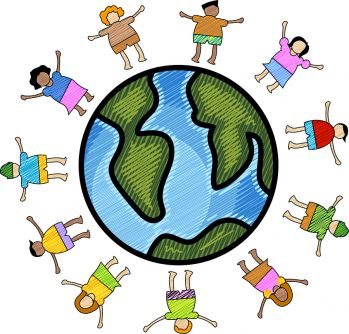Skim today’s “Across the USA” page. Find a state name with which you are unfamiliar. Then, using an encyclopedia or the Internet, find out three interesting facts about the state. Share your facts with a peer.
Turn to today’s Weather page and find the graphic entitled “World weather.” Say the name of a city aloud and see if a partner can identify the country in which it is located. (She or he can use a world map for guidance.) Then, switch roles and repeat. Continue the activity as time allows.
Find a story in today’s paper that mentions one of the elements — air (wind), fire, water or earth. In writing, explain how the element both helps and hurts human beings.
List at least 10 bodies of water, mountain ranges or other natural landmarks mentioned in today’s paper. Locate each feature on a map, and write a detailed description of its location.
Find seven names of countries, languages, nationalities or religions in today’s paper. (Note how these names are always capitalized.) Locate the countries on a map. Then, use the map and an encyclopedia to explain where the religions you identified are practiced and where the languages you found are spoken.
Give your students two large pieces of construction paper. Have them label one “cities” and the other “countries.” Then, look through USA TODAY, and cut out the names of cities and countries found in articles, headlines, datelines, etc. Paste each on the appropriate sheet of paper.
There are seven continents in the world — Europe, Asia, South America, North America, Antarctica, Africa and Australia. Peruse the paper with a partner, and try to find the names of two cities or countries from every continent (except Antarctica). Trade answers with another pair, and use an atlas to check their work.
Name four states — one located in the North, South, East and West, respectively. Then, turn to the “Across the USA” feature on page 11A and read the news from those states. Finally, draw illustrations and write captions for two of the briefs you read.
Turn to today’s Weather page. Using the map (and other resources as necessary), label as many of the states as you can. Use such clues as city names, geographic location, shapes, etc. to help you identify each state. After, try to name each state capital. Then, answer the following questions: 1.) How many states are there? 2.) Which states are not physically connected to the rest of the U.S.? 3.) Which states border the state you live in?
Record the names of 15 countries mentioned in today’s paper. Then, exchange your list with a partner and, through research, identify the capital of each country. Finally, pinpoint each nation on a globe or map. What languages are spoken in each?
Look at the Weather Page on the back of today’s News section. Locate your state on the map and write its name or abbreviation on it. Then, label as many other states as you can. Exchange maps with a partner, and use an atlas or another source to check your partner’s work.

